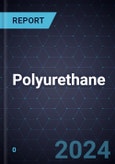Increased Demand for Eco-conscious Solutions and PU Products that Support Circular Economy Principles to Enhance Growth Pipeline
This study presents a comprehensive analysis of the global polyurethanes (PU) market, with a detailed focus on regional segmentation, revenue, and volume metrics from 2019 to 2029. By examining historical data and projecting future trends, the study offers a seven-year forecast from 2023 to 2029, using 2022 as the base year.
Segmentation by system: rigid foam; flexible foam; adhesives, sealants, and binders; coatings; and elastomers and TPU Segmentation by region: The Americas; Europe; Asia-Pacific; and the Middle East, South Asia, and Africa.
In the Americas, the study covers the United States, Canada, and Latin America, including Mexico. This region demonstrates diverse market dynamics, with the United States leading in consumption and innovation. Canada's market is characterized by its focus on sustainable and eco-friendly PU products. Latin America shows significant growth potential, driven by its expanding manufacturing and construction sectors.
The European segment encompasses the European Economic Area, European Free Trade Association states, the United Kingdom, and the Commonwealth of Independent States, including Ukraine and Israel. Europe's PU market is distinguished by its stringent environmental regulations and advanced technological landscape. The region's focus on sustainability and the development of eco-friendly PU variants are key factors influencing market growth.
For the Middle East, Africa, and South Asia, the study includes Africa, Middle Eastern countries (including Turkey), and South Asian countries (comprising India, Pakistan, Bangladesh, Sri Lanka, and Nepal). This diverse region is witnessing rapid industrial growth, particularly in the Middle East and South Asia. The demand for PU in construction, automotive, and other industrial applications is propelling the market forward in these areas.
Analysis of Asia-Pacific focuses on China, Japan, South Korea, the Association of Southeast Asian Nations (ASEAN) Free Trade Area, Australia, New Zealand, and other Southeast Asian countries. This region is a significant player in the global PU market, with China leading in volume and innovation. Japan and South Korea are recognized for their technological advancements and high-quality PU products. The ASEAN countries are emerging as key markets due to their growing industrial and construction sectors.
The study's methodology involves an in-depth analysis of the volume and revenue for each system and region, providing insights into the factors driving growth as well as potential challenges. The forecast is based on the expected compound annual growth rates, offering a strategic view of the market's evolution.
The global PU market is poised for robust growth, with each region contributing uniquely to the industry's expansion. This study offers valuable insights for stakeholders, investors, and industry participants, helping them make informed decisions in a dynamic and evolving market.








